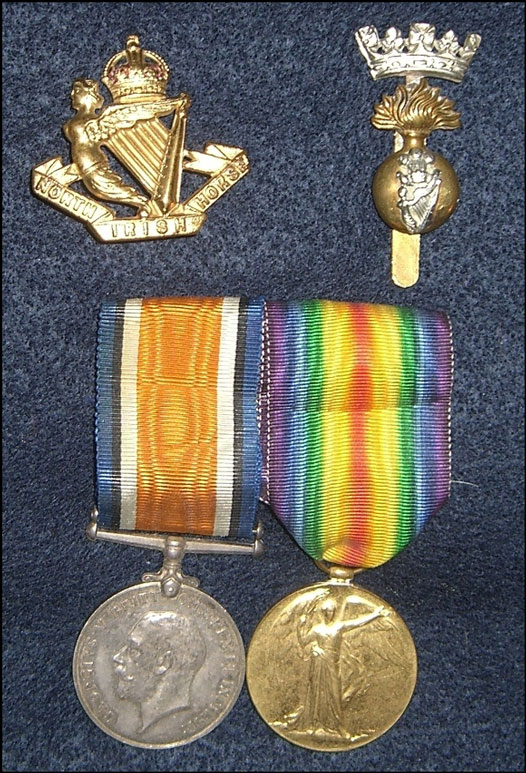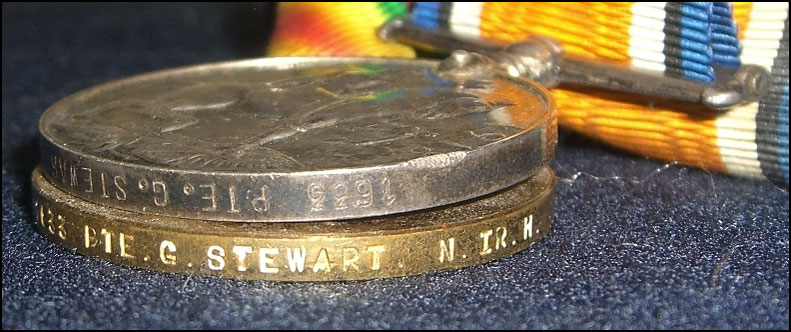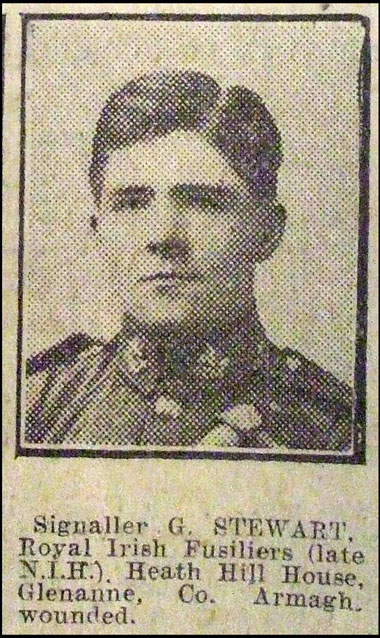Private George James Stewart
George James Stewart was born on 6 August 1896 at Lisdrumchor, Markethill, County Armagh, the fourth of seven children of farmer Hugh William Stewart and his wife Elizabeth (nee McCall). He grew up at Lisdrumchor, but by the time of the 1911 Census was living at Hill Street, Newry, and serving an apprenticeship with wholesale grocery and seed merchant Hugh Alexander Savage.
Stewart enlisted in the North Irish Horse on 27 or 28 May 1915 (No.1633). He embarked for France in 1916 or in the first half of 1917.
In May and June 1916 the five North Irish Horse squadrons then in France, together with the 6th (Inniskilling) Dragoons Service Squadron, came together to form the 1st and 2nd North Irish Horse Regiments. In September 1917 the 2nd North Irish Horse Regiment was disbanded and most of its men, together with some surplus to the needs of the 1st NIH Regiment, were transferred to the 9th (Service) Battalion, Royal Irish Fusiliers – renamed the 9th (North Irish Horse) Battalion. Like most, Stewart was transferred on 20 September following a period of infantry training at the 36th (Ulster) Division's Infantry Base Depot at Harfleur. He was issued a new regimental number – 41192.
The 9th (NIH) Battalion played a significant part in actions over the following twelve months – at Cambrai (November-December 1917), the Retreat from St Quentin (March 1918), the fighting around Messines (April 1918), and the Advance to Victory (August to November 1918).
The War Office Daily Casualty List of 14 June 1918 reported that Stewart had been wounded. This was probably during the fighting near Kemmel Hill in April 1918.


Stewart's medal and cap badge group pictured here kindly provided by John Pinkerton. Newspaper image from the Belfast Evening Telegraph kindly provided by Nigel Henderson, Researcher at History Hub Ulster (www.greatwarbelfastclippings.com).

